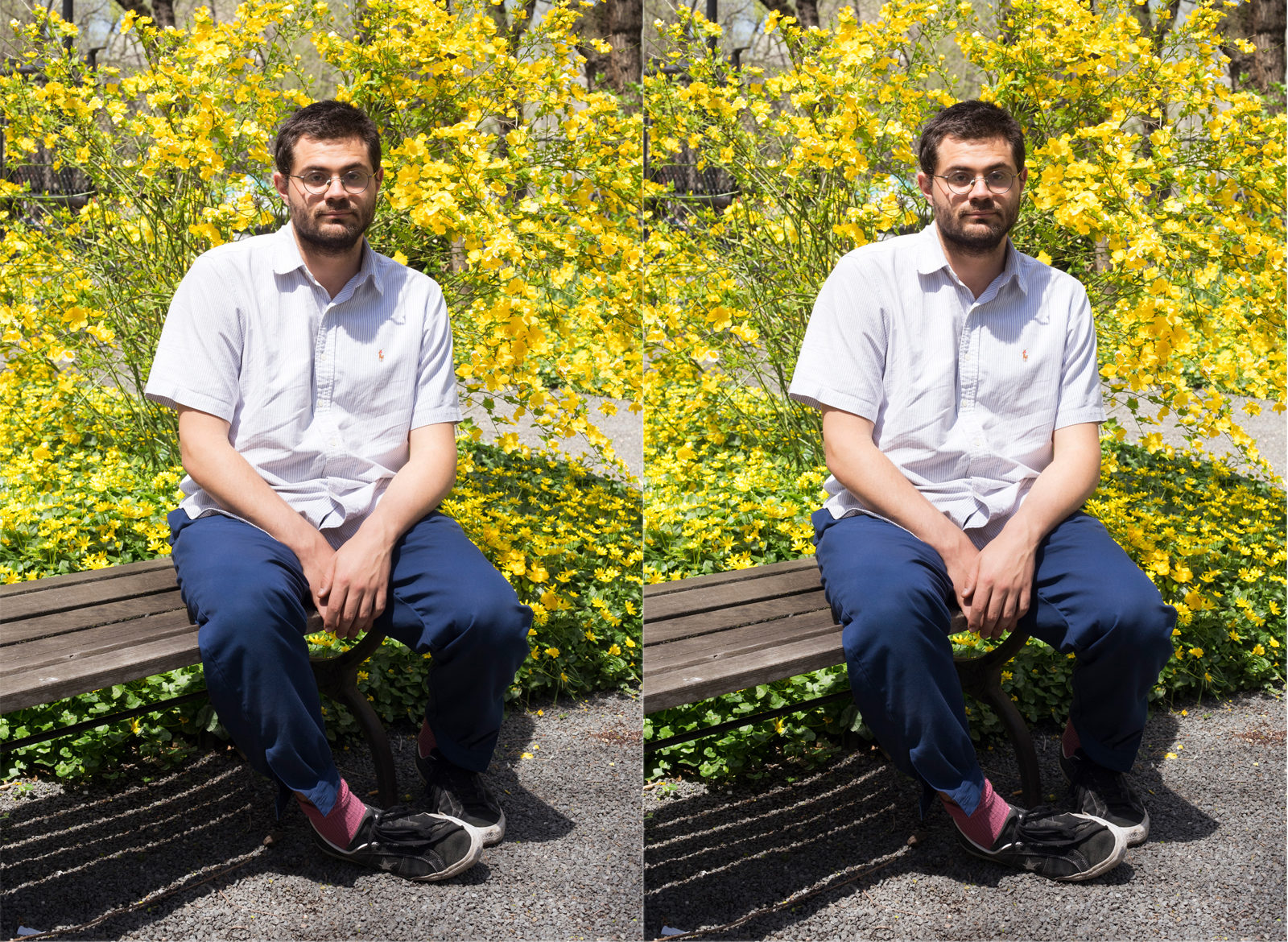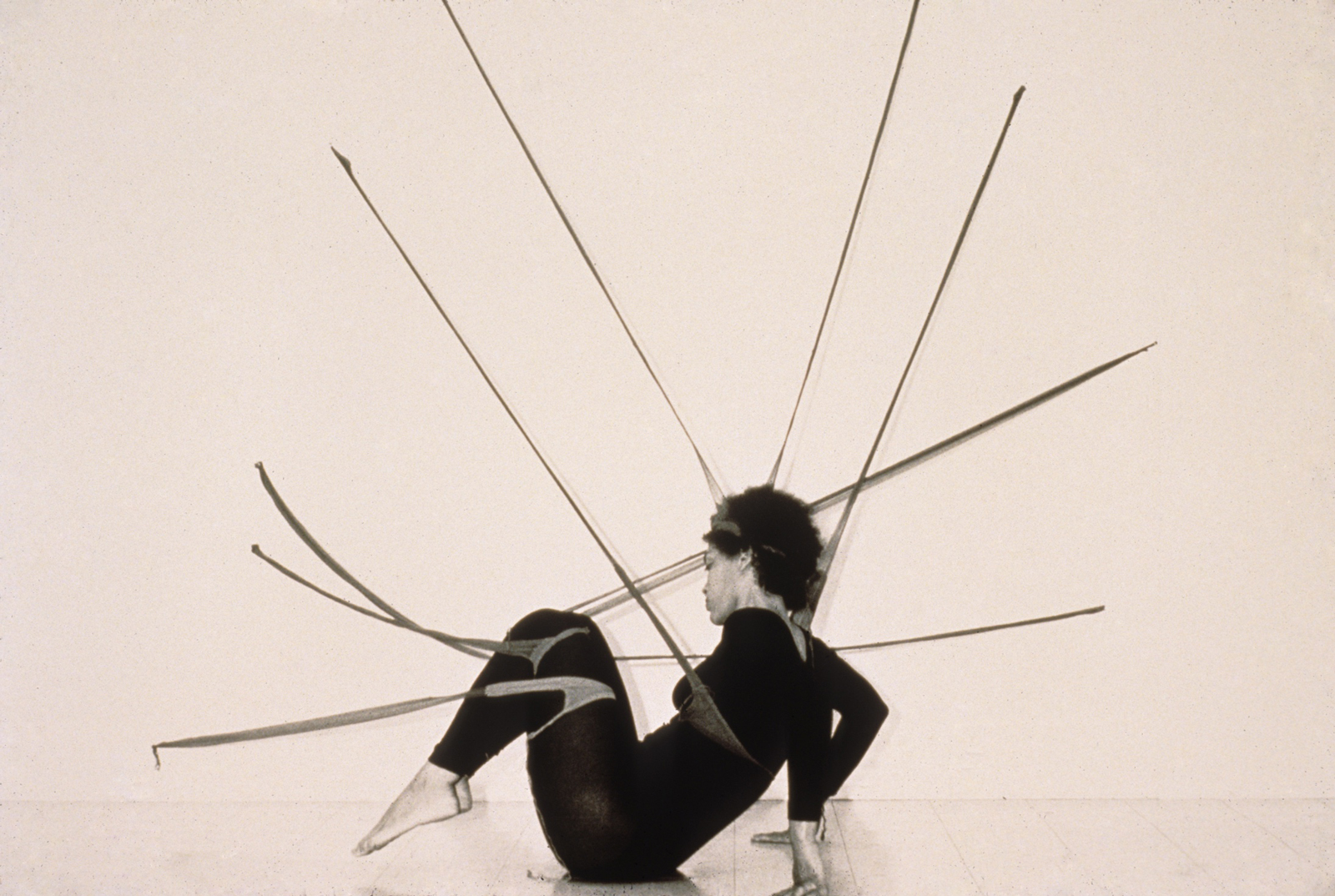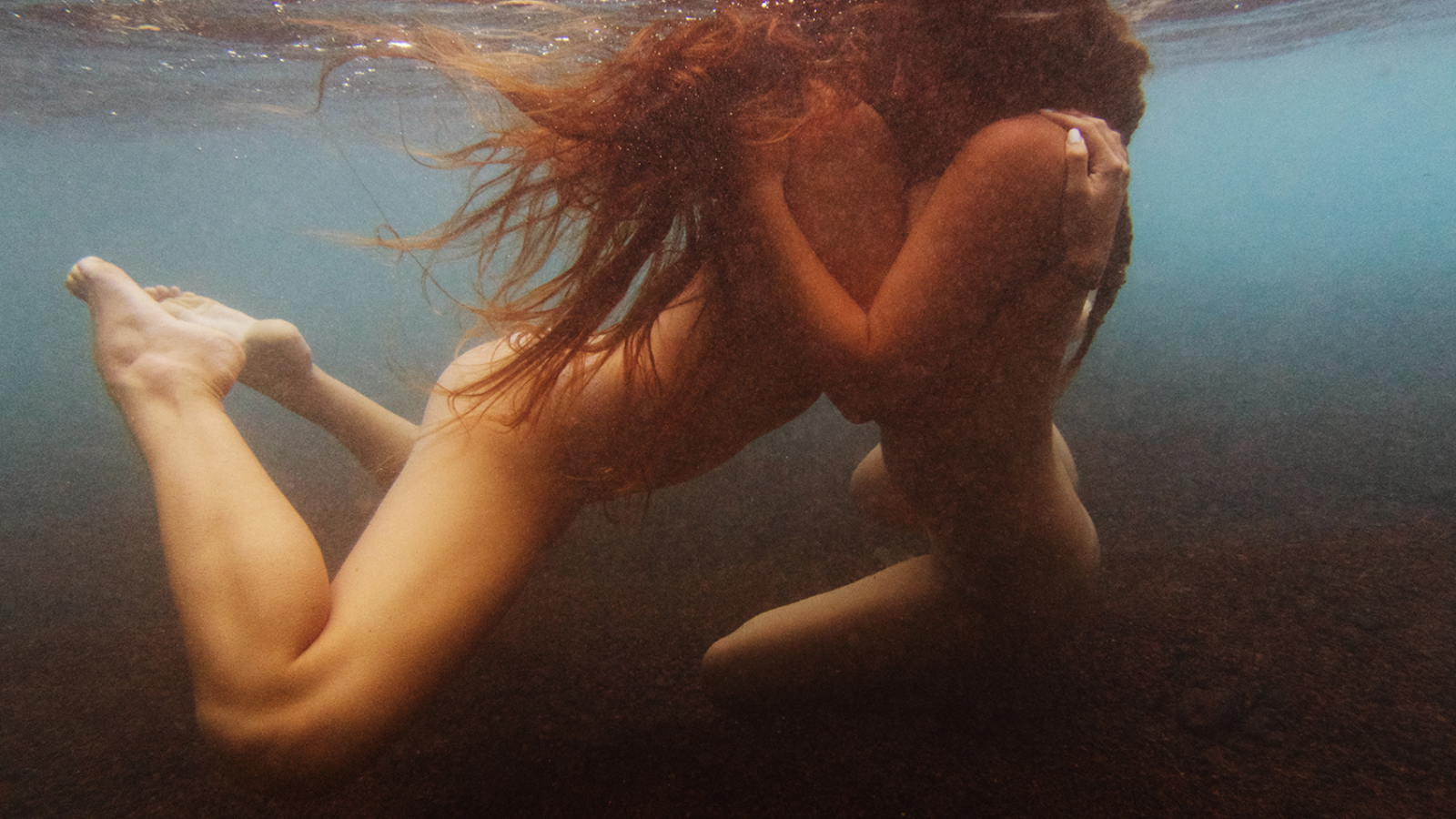Interview and Photo: Claire Christerson
Lorenzo Bueno’s first solo show in NYC, “Pointless,” is an architectural proposal to Boston Properties, the property owners and managers of the former Citicorp Center. The project calls for Boston Properties to construct a scale replica of the building and install it upended on the original structure. The matching angled roofs are to cleat onto each other and suspend the copy atop the original.
“Folly” is a through line in this show, which made me seek a more theatrical connection between Bueno’s different projects leading up to “Pointless.” Bueno is a natural playwright, and four of his preceding projects can be seen as different “acts” that then arrive to Act 5, which is “Pointless.”
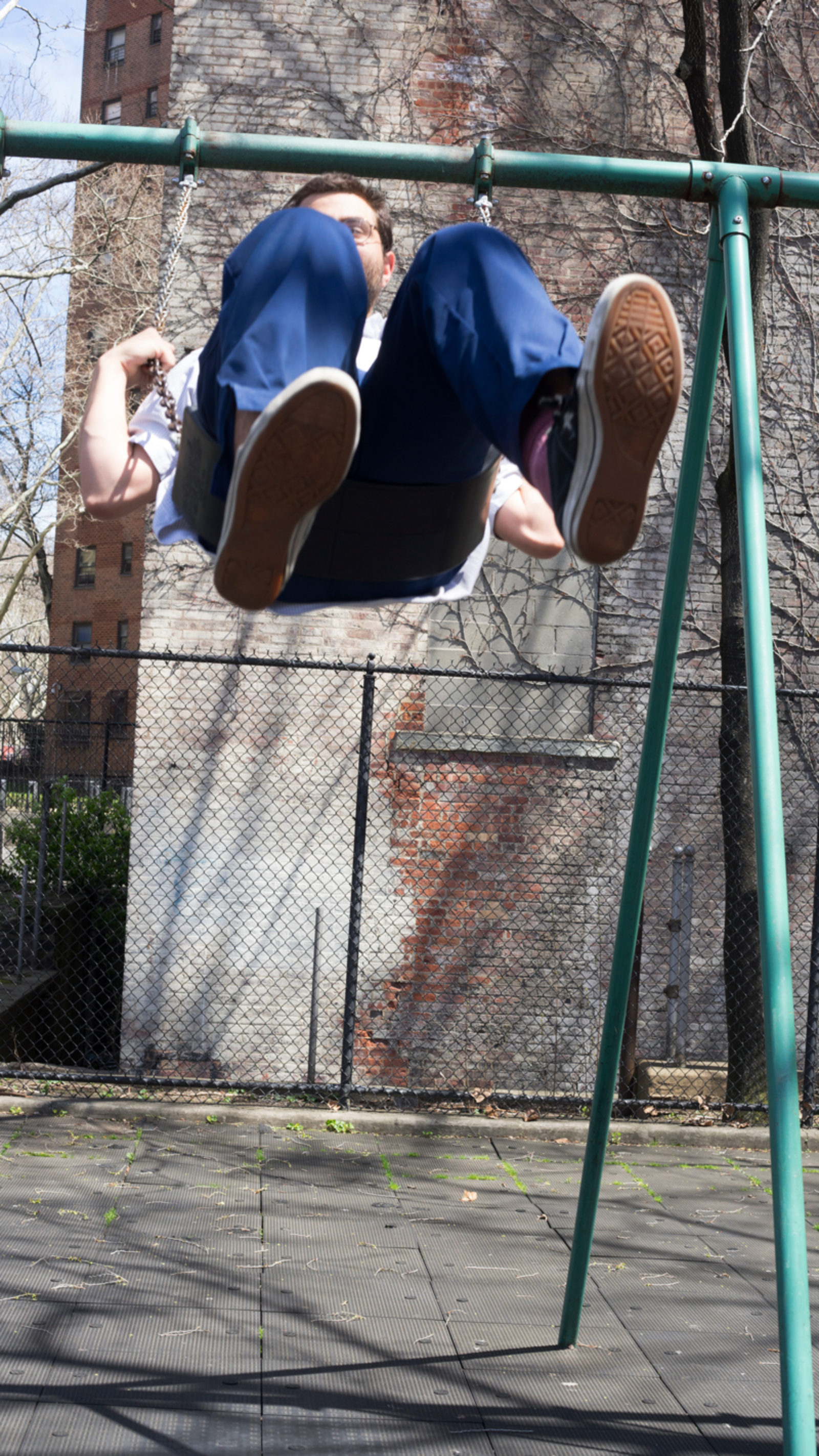
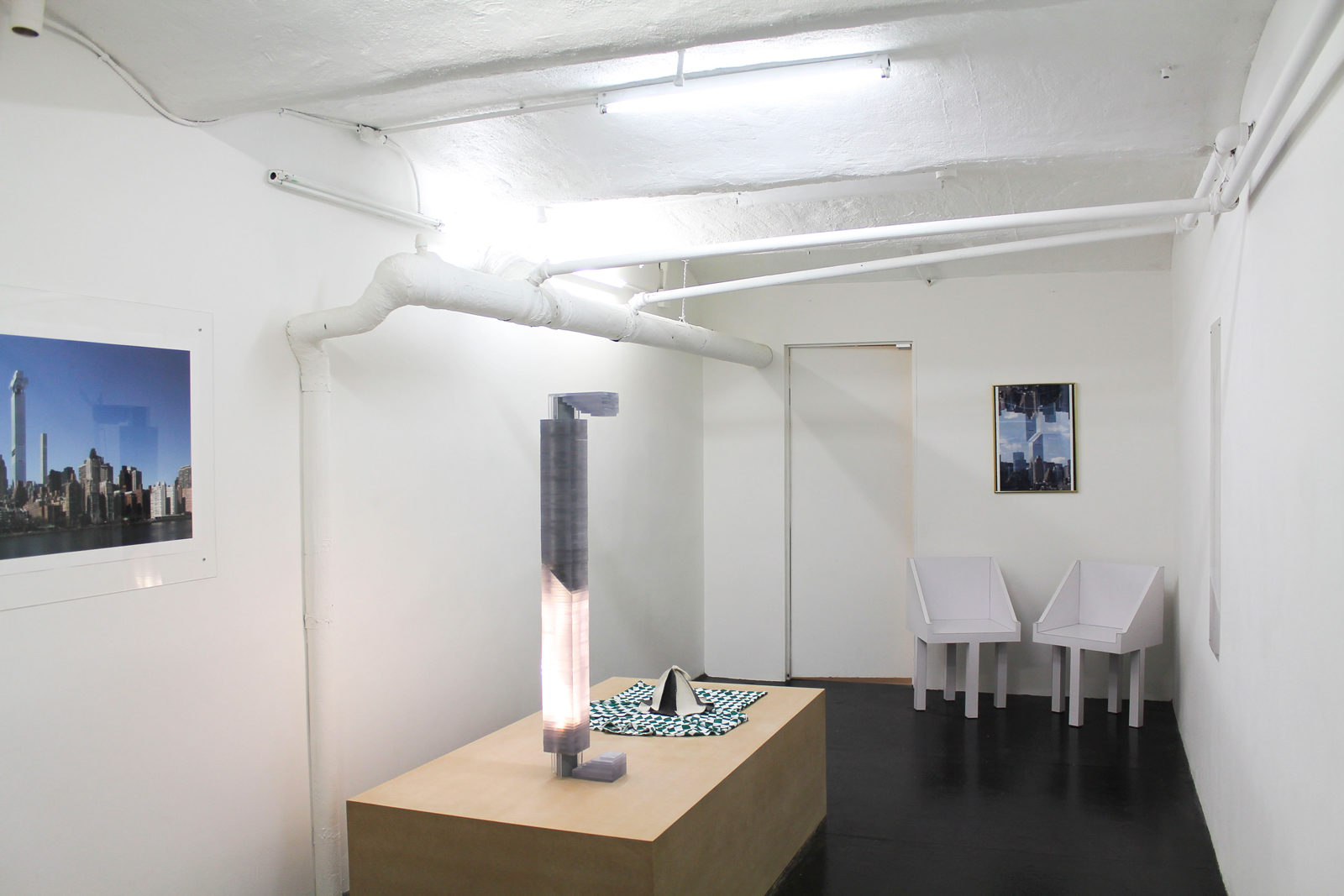
These are the preceding four acts:
-Bueno founds an artists’ residency at a McDonald’s in TriBeca.
-He makes clothing made from construction gloves; Bueno’s interest in the material that is/was used to repair New York City being directly applied to a crosswalk rather than just being seen as a fashion item.
-The Rejection Letter Project: Bueno created different versions of himself, and applied to various colleges; Harvard and Yale actually called him in for live interviews, which Bueno attended in character. Each school rejected him, and from transcribing these interviews, he was inspired to create his next work, “The Seagull.”
-“The Seagull” was a theatrical adaptation that was set on a beach. Bueno made this choice because he felt it related to the way spaces such as courtrooms, theatres, and churches are all made for viewers to look in the same direction.
Between each act, Bueno uses painting to think about art differently and to reflect after having done these bigger projects. This medium help him make art differently, one where clarity and communication are not such crucial elements. Perhaps for him, the act of painting is an intermission.
With this background of the four acts that lead to Bueno’s Act 5 – “Pointless” – here is the conversation we had while we sitting in the gallery.
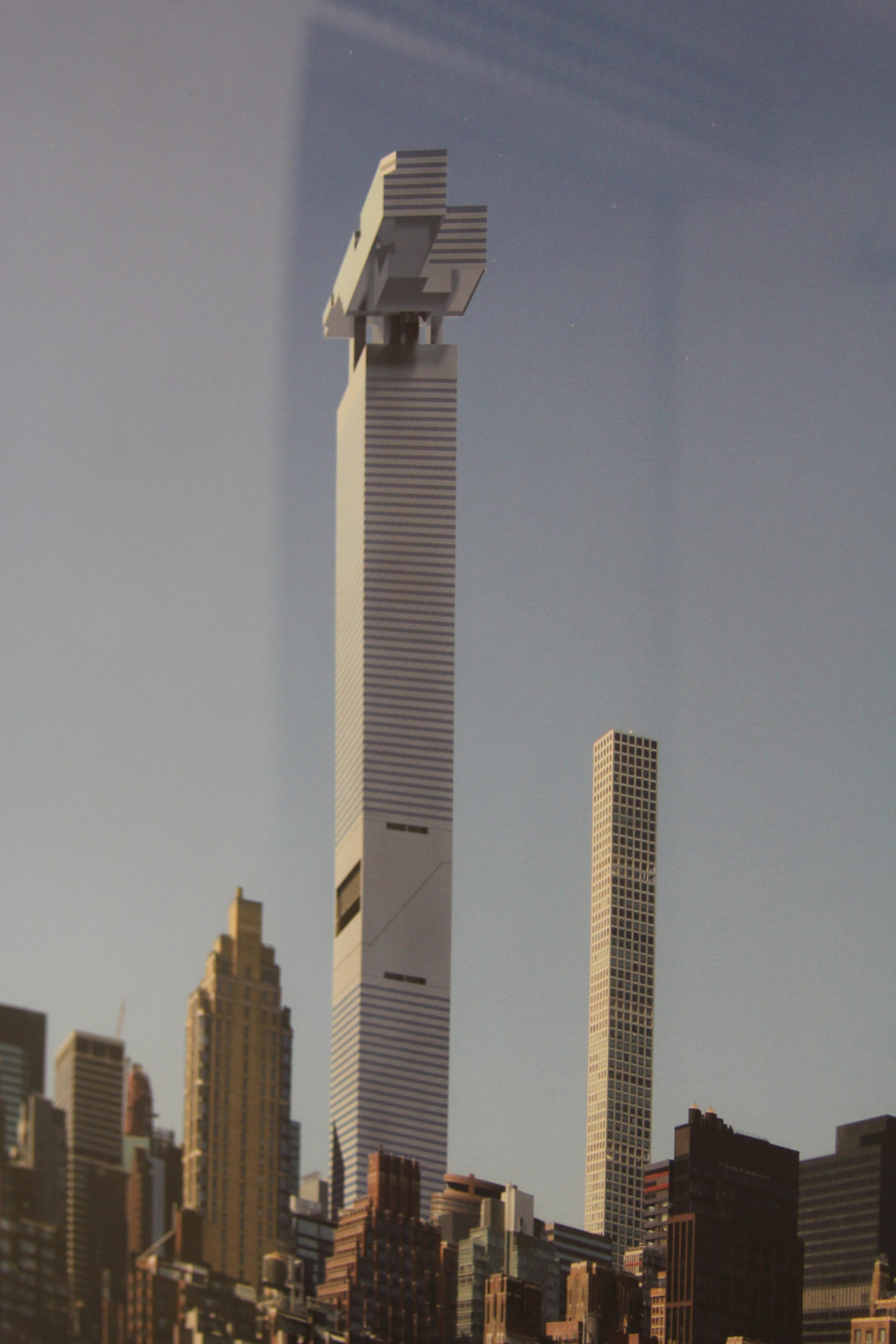
CC: So to jump into “Act 5,”…
LB: It’s interesting to think of this show as an act. When I was developing “Pointless,” I went to the Chicago Architecture Biennial and it was one of a few a moments where I left an exhibit feeling optimistic. The nature of a proposal is inherently optimistic when it’s something that tries to solve or point out a problem. It’s very activated. There was that and then I was thinking about the project’s relationship to theatre, which is what I’m interested in; a proposition is the integration of fiction into real time and space. Which theatre obviously is as well.
CC: To stay within the structure of an “act,” do you feel that your projects leading up to this current show where are all bumping up against each other, reacting in order to get to the next “act?”
LB: Your question makes me think of a couple of things: one is this Josh Smith interview that I read, where he spoke about how he would solve the problems of the last painting with the next one, and I do think that is a thought that I come to naturally. Instead of trying to alter or fix it, he leaves what he’s unsatisfied with, which makes for an interesting painting. He solves the problem in the next painting by continuing to work. That is an interesting way to think about the reaction.
CC: I feel like reaction comes into your work a lot where you’re reacting against the city constantly. I think that with each project you have done, the word: “reactionary” sits in me the more I think about your work.
LB: Yea, and reactionary is often derogatory—-I looked at the definition of reactionary and it means ultraconservative, maybe reactive is better.
CC: But I don’t think of it in that way. I think of it as you learning from one thing and taking it into the next thing that you do.
LB: For sure, I think that is something that drives why I’ve made all these different types of work. It’s not just one medium over and over again. I think that since I’m young it’s important for me to try out as many things as I can and see what it is that I like. Sometimes I am a little jealous of people who have found one thing that they’re really passionate about, or they feel like their voice is best expressed through one medium. I am not like that, but I think that I start all these different mediums/projects in order to learn more about the medium. Through “Pointless,” I learned a lot about architecture and that was a goal of mine. With “The Seagull,” I wanted to learn about theatre and what that meant as a viewer of traditional gallery art.
CC: That’s true – once again that comes through in this work that we’re looking at right now. You are completely considering the environment down to how every single piece is presented in this white box.
LB: Yea, I mean I would hope that all artists do that.
CC: Haha of course, but I’m saying you’re very intentional with how everything is done. Though it’s not all one medium, the medium is your brain moving through something. At the end of the day, that’s the driving force for all of this. Just being fluid and allowing an idea to blossom without restricting it to one way of thinking because you have to.
LB: So many ideas come up while you’re making “it”.
CC: Definitely.
LB: So if you want to stick to one thing and restrict yourself, you lose the ability for a lot of content to be developed. I think it’s also interesting how now “content” has become a derogatory word. It’s commercial or “branded content.”
CC: For me when I think of “content,” I think of filling one day’s worth of content because tomorrow you have to do it all over again . Filling this hole that keeps restarting every day
LB: I don’t know if I restart every day, I feel like there’s always so much slippage…
CC: Thinking about content for the internet and thinking about how people approach it, needing more all the time. Less about you or me or whoever waking up and hitting restart.
LB: On the way over here, I was listening to Destiny’s (Princess Nokia) new album, and she is a true artist; I’ve known her work since the first single, and it’s amazing how polyphonic the work is. There are so many different tones and ideas and I wish that all art could be like that. It really saddens me when some people feel like they have to stay in one trajectory or stay with one voice.
CC: That leads me to the press release for your show and thinking about how it’s addressing the change of the city – about people who come here to be artists and about real estate changing and people coming in to buy buildings and not even live in them, it’s just property to own. And some people do choose one trajectory because they think that will end in a good monetary situation for them…that was just where my brain went with that…
LB: I will say this, because you just reminded me of it – my friend Amina Correa came by and we were talking about the pace of academia versus the corporate pace and the differences between those languages and temporalities. The different paces of those transactions; the difference between a transaction between a book or information on the page as you start to develop it and then these transactional business relationships and how one has to be slow and the other one has to be fast.
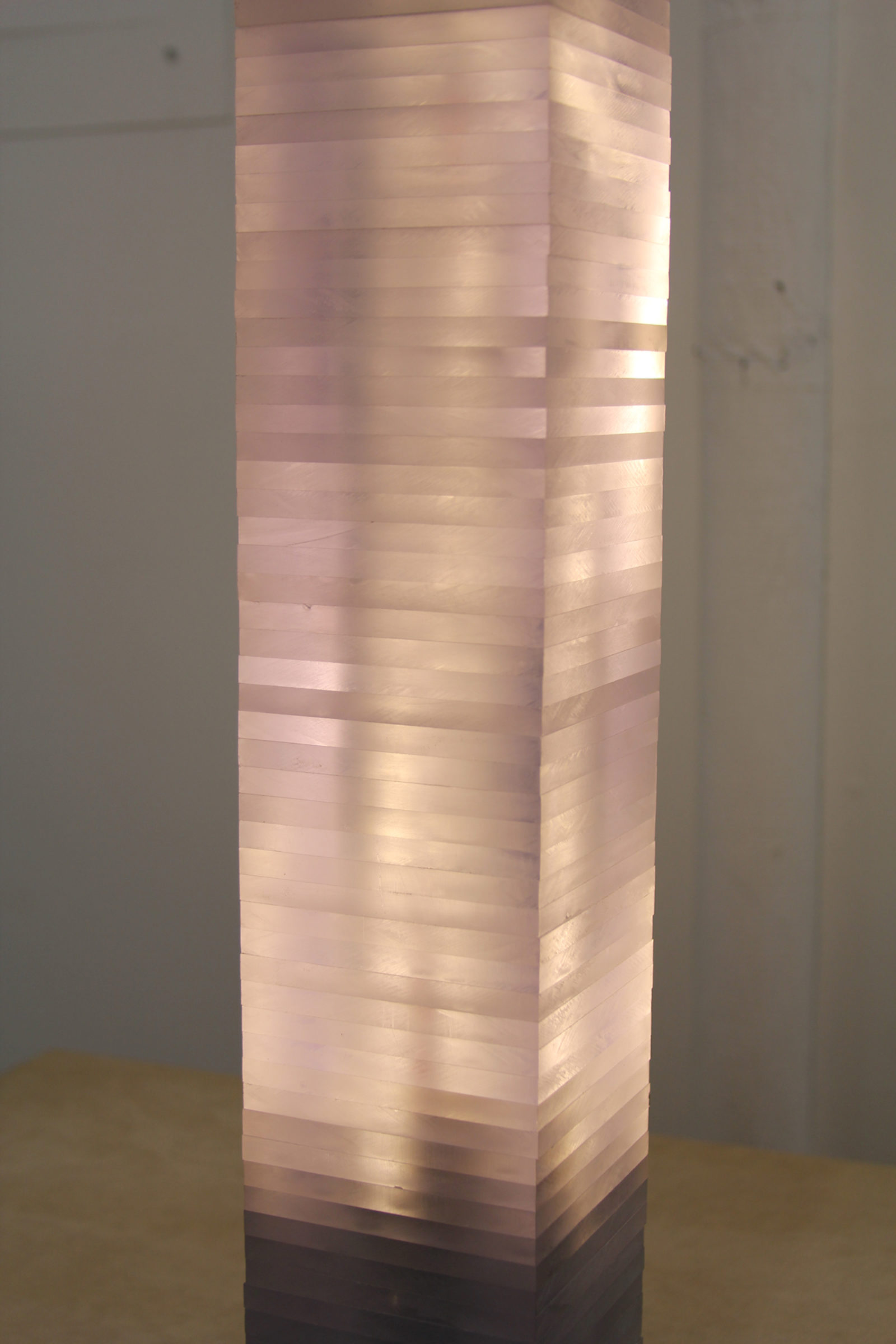
The idea that every artwork is a proposal, and you pile on all these things you are already thinking about and some things stick and some things don’t.
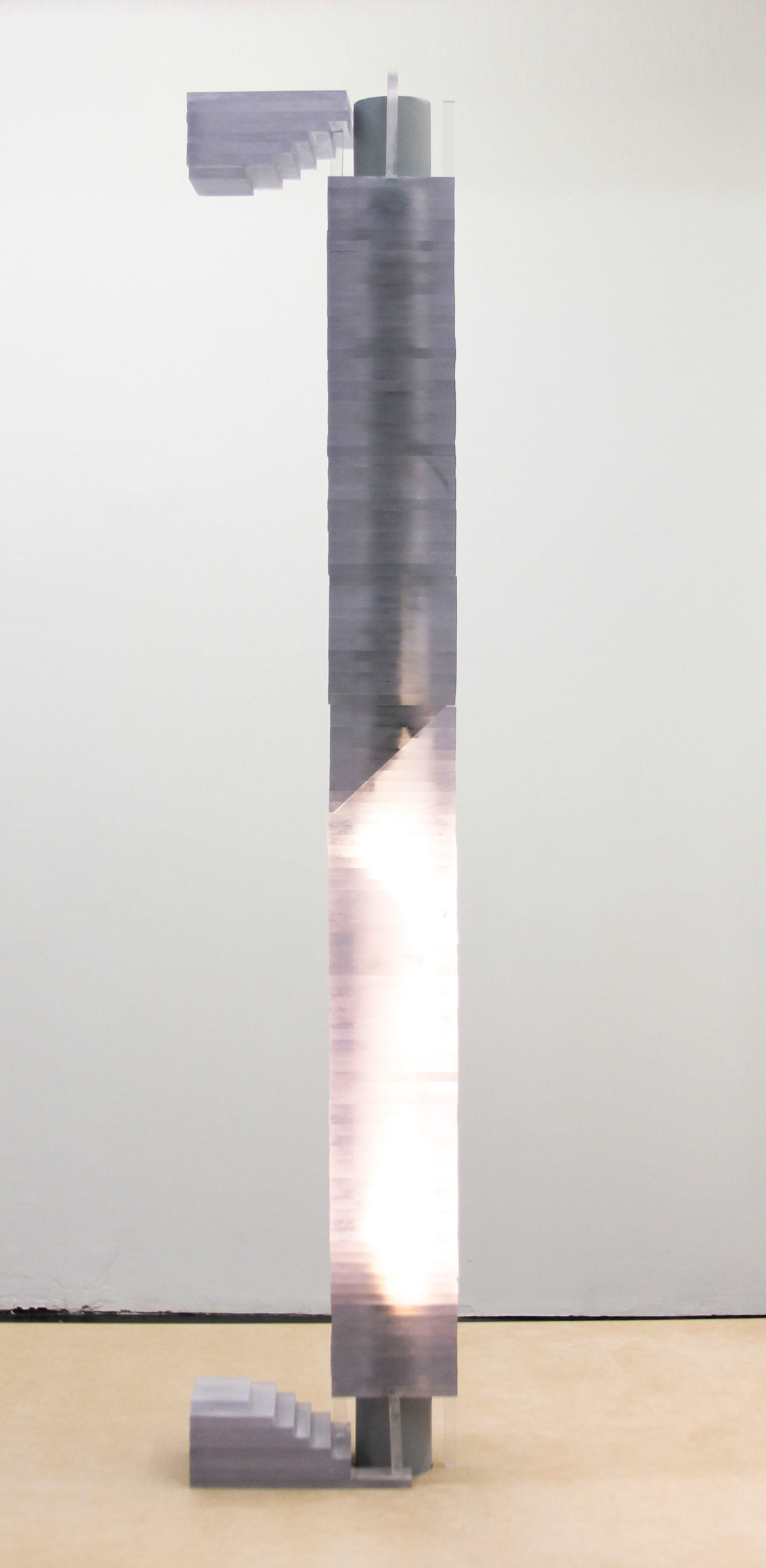
My friend Eduardo Navarro came by and he’s not from New York, he moves around a lot, but he’s from Argentina; we mostly had the conversation about the show in Spanish, which is interesting because the show is so based in New York. The whole folly element of it is so English-language based. I was excited to see what he would get out of the show. I mean he obviously speaks English and has been to New York many times, but to see it from this different perspective…he spoke about the work being about precision, and how precision is needed for these structures to stand. They need to cleat on to each other in this way, and then he was talking about it in terms of the precision of a haiku or the precision of a joke. These things have to be paced and timed perfectly in order for them to work. Also the precision of observation and the precision of an observation. Even the way the idea is formed, it feels like this piece that notches, all these different ideas that notch into one.
CC: Can you talk about when that notch happened for this particular idea?
LB: How I came up with this?
CC: Yes.
LB: It’s kind of embarrassing because I was watching Zoolander. In my mind, I thought that Mugatu’s building was the CitiCorp Building because on top of it is this huge M. So I thought that the M was just the doubling of these two crowns. But it’s really this building over by Bryant Park, so I was watching it and that was kind of how I came up with this. I immediately thought oh you can cleat this on to that.
CC: I mean…that’s amazing…that’s how it happens.
LB: I thought that and then very soon after I came up with the name for the work, “Pointless.” I then started researching the building and then all of these ideas that I had already been having about my work just came together. I feel like these things happen retroactively, you just read it and you project your thoughts onto this proposal. The idea that every artwork is a proposal, and you pile on all these things you are already thinking about and some things stick and some things don’t.
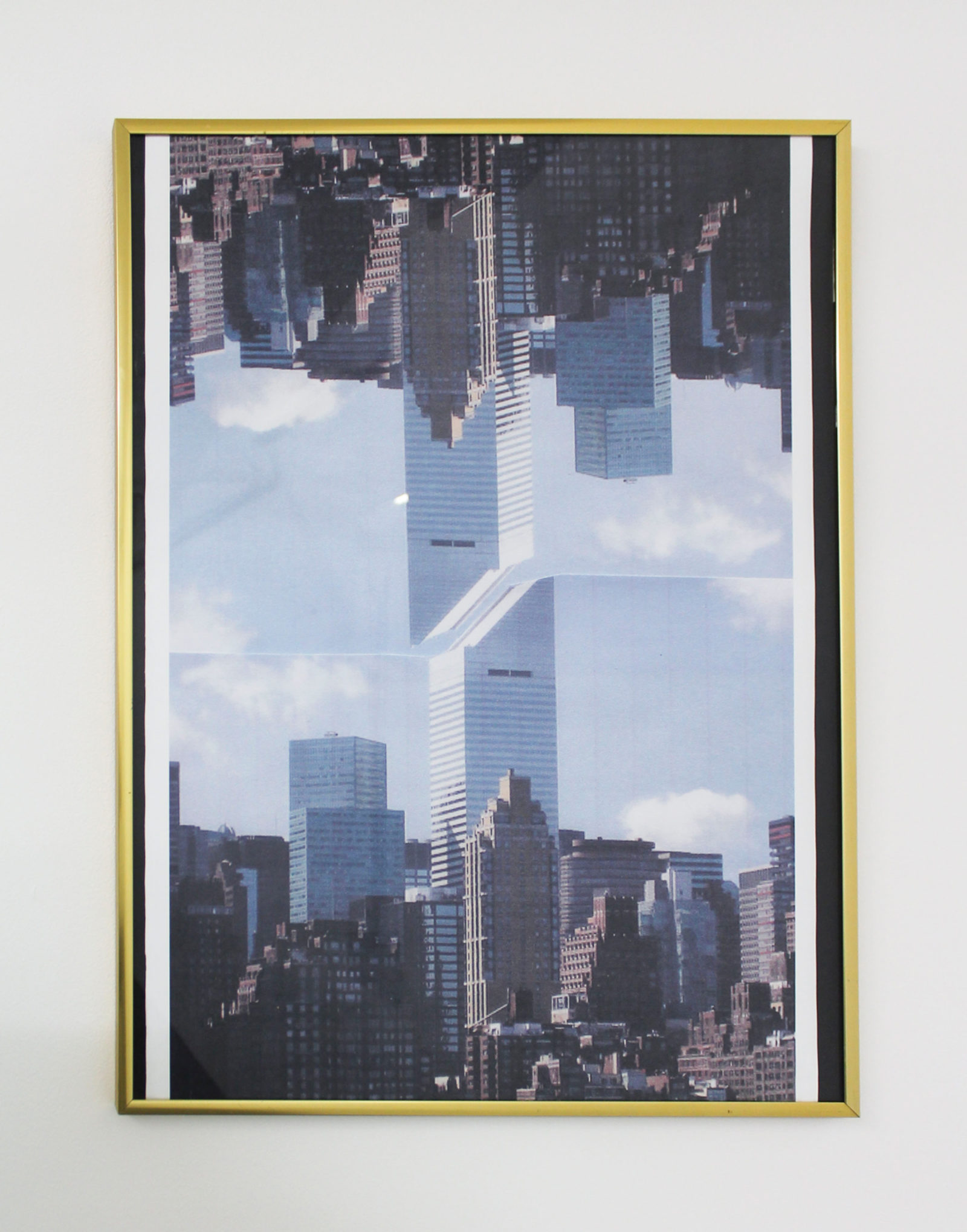
CC: To address Folly, a little bit more, do you feel like you are the folly in this whole thing?
LB: I think the work is…I think the show is. People have said that I am very present in this piece, that my personality is very present in this piece. The performer in my show, Alexandra Tatarsky has said that there is this notion of folly in all of my work, especially with the residency, and the rejection letters; there’s this desire to use humor and absurdity as a tactic.
CC: I feel like you use it as a way to break the fourth wall. You set the scene for the idea, and become the translator between the audience and the object or person, in the show or production.
LB: I understand what you are saying, but it’s important to distinguish that I break the fourth wall with the viewer. I think what’s important about that is that it shows that the joke isn’t on the viewer. The joke is on the institution that I’m critiquing. That was another thing that I thought about when I was making this.
CC: With the letter that you wrote to Boston Properties, I was really taken with how you related buildings to characters, especially referencing The Breakfast Club.
Here is a sample from the letter:
“Dear Boston Properties,
I have long been fascinated with 601 Lexington Ave, a building your company acquired in 2001. I can’t believe the whole building is lifted and supported by those columns! The 45 degree angle crown also really distinguishes it on the skyline. It’s a very impressive purchase, you must be very proud.
Recently I’ve been playing a game where I think of the midtown skyline as an ensemble and try to determine which building is which high school movie archetype. If Chrysler is the princess and Metlife is the jock, your building would be the cool outcast. Especially because it’s so retro. But does loneliness have to be a quality of the outcast? I ask because I think your building looks a little sad. It looks like it needs a friend, and now that you’ve started renovating your beautiful sunken plaza, I’ve been thinking about some more work your building could benefit from.”
LB: The letter lets the viewer in on the joke, and shows that the joke is addressed. It would be really disappointing for me if someone felt that I was playing a joke on the viewer. I made it in a way that was very clear about who the work opposes.
CC: You are the carrier of the humor going back and forth between whoever you are addressing and then the people who are coming to observe it. It’s a nice balance to put yourself in because you do that with all your work and that’s what I like about it. To be able to weed out these little pieces of humor and put them back into these structures is really important.
LB: Humor is a more productive way of researching some sort of truth.
CC: I mean…I fully agree…you know me. Through laughter comes learning. People like being on the same team, so when something has humor to it, they feel united by it.
LB: There’s this lecture that William Carlos Williams gave in Harlem in 1951 and the last line of his introduction is: “If it ain’t a pleasure, it ain’t a poem.” I don’t necessarily agree with this, I think that there is a lot of great work that is challenging and isn’t exactly the most pleasurable thing. I do think that with this particular work it’s important that it be something that isn’t so self- serious and is more accessible through that.
CC: I think that work, even when it’s challenging to make, is a pleasure because it’s a pleasure to have gotten through the challenge. It’s a pleasure to grow and to learn.
LB: It’s very rewarding for sure.
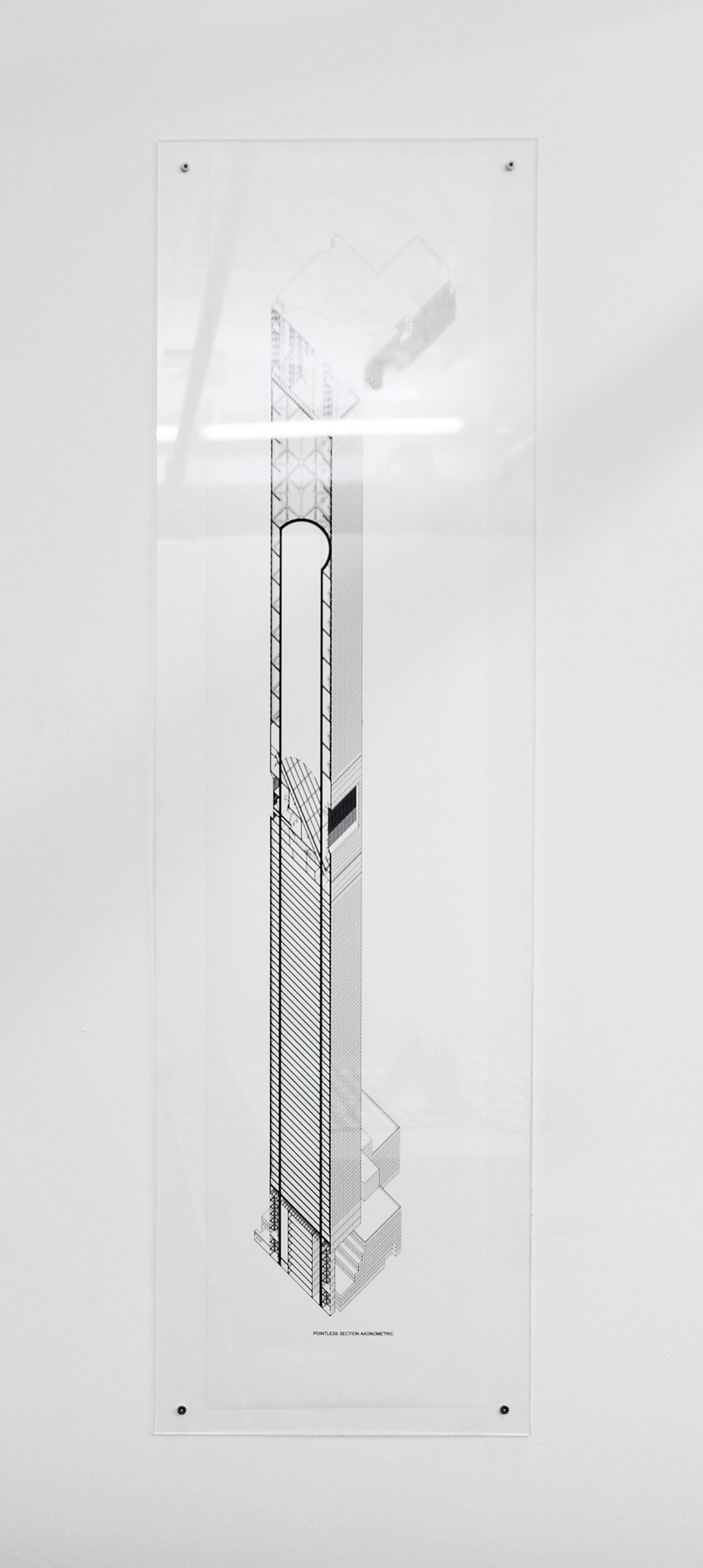
CC: So what would you do if this plan was accepted?
LB: I wouldn’t do it. No way. We were thinking about the budget for this, it would be four times as much as it was to construct the original building. The whole piece is against that excess.so no way. That is something I thought a lot about – wanting to learn about architecture, it’s the medium that is most complicit with the biggest problems of our world. It spends the most money, it makes the biggest footprint on the environment, and most of the time these buildings are made in favor of distinguishing a corporation’s identity. That’s why it has this 45 degree roof and this column strip; the point of that is to distinguish Citibank on the skyline. To leave its footprint on the skyline…it says a lot. “Pointless,” negates the identity of the corporation not only by subverting their building’s distinguishing characteristic (its crown) but by transforming their canonized building into something brutal, inelegant and imposing. In this sense, the extension is simultaneously subtractive and additive.
“Pointless,” is open until Sunday, May 6th at Entrance Gallery, located at 48 Ludlow. Open from Wednesday-Sunday, 12pm-6pm.
